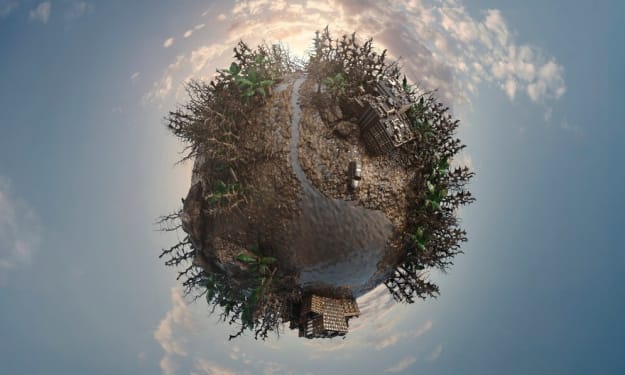In Nature, Why Is Blue So Rare?
Nature’s Palette: The Elusive World of Blue Animals

Have you ever paused to contemplate the rarity of blue animals in our world? It's a fascinating phenomenon that has intrigued curious minds for generations. Imagine, if you will, a blue tiger, a blue bat, or even a blue squirrel. Finding it hard to visualize? That's because such creatures are simply nonexistent. While blue whales may come closest to embodying this hue, even their coloration isn't as vivid as one might expect.
Animals come in a plethora of colors, but blue seems to be nature's elusive masterpiece. However, when we do stumble upon a blue creature, it's undeniably breathtaking. From the iridescent wings of a butterfly to the azure feathers of a blue jay, nature doesn't hold back when it comes to showcasing the color blue.
To unravel the mystery behind this enchanting hue, we embark on a journey through evolution, chemistry, and the captivating world of physics. But before diving into the depths of these scientific realms, let's first explore the significance of color in the animal kingdom with the help of some fascinating butterflies.
Meet Bob Robbins, curator of Lepidoptera at the National Museum of Natural History in Washington D.C. He'll tell you—butterflies are undeniably awesome. These creatures, descendants of moths, have evolved to be active during the day, granting them a distinct advantage: the ability to utilize light for communication.
Butterflies boast some of the most vivid and intricate patterns in the insect world, and there's a profound reason behind this flamboyant display. The colors adorning butterfly wings serve as messages—a warning of toxicity, a declaration of territory, or a signal of courtship. Yet, not all butterfly colors are created equal.
Zoom in on a butterfly wing, and you'll discover a mesmerizing array of tiny scales. These scales contain pigments—organic molecules that absorb every color of light except the one we perceive. From oranges to reds to yellows, these pigments derive from the creatures' diet. As the saying goes, "You are what you eat."
But what about blue? Ah, blue is different. Enter the Blue Morpho butterfly, arguably one of nature's most exquisite creations. Contrary to common belief, the mesmerizing blue of their wings doesn't stem from a pigment. Instead, it arises from the intricate structure of the wing scale itself—a revelation that might just blow your mind.
Upon closer inspection, these wing scales resemble tiny Christmas trees, each branch meticulously arranged to create a dazzling spectacle. As light interacts with these structures, something extraordinary happens. Blue light, with its perfect wavelength, emerges unscathed, creating the vibrant hue that captivates our senses.
But the magic doesn't stop there. These butterflies possess a pigment at the base of their wings, enhancing the purity of their blue hue by absorbing stray red and green light. It's a symphony of physics and biology, choreographed by evolution itself.
Butterflies aren't the only ones to harness the power of structural coloration. From blue jays to peacocks to even the human eye, countless creatures employ microscopic structures to create stunning shades of blue. Unlike pigments, which rely on chemical compositions, these structures manipulate light waves, resulting in hues that defy conventional explanation.
So why is blue so elusive in nature? Scientists speculate that, eons ago, birds and butterflies evolved the ability to perceive blue light before developing the means to produce it through pigments. Thus, nature improvised, utilizing the principles of physics to craft its own vibrant blues.
As we delve deeper into the intricacies of color, it becomes clear that nature's palette is as vast as it is enigmatic. From the delicate wings of a butterfly to the majestic plumage of a peacock, each hue tells a story—a testament to the marvels of evolution and the beauty of our natural world.
In the words of Robert Hooke, who marveled at the colors of peacock feathers centuries ago, "these colours are onely fantastical ones." Indeed, the allure of blue in nature continues to fascinate and inspire, beckoning us to unravel its mysteries and behold its splendor.
But what about other blue-hued creatures in the animal kingdom? Why do we find blue in certain birds, insects, and even human eyes, but not in mammals or reptiles? The answer lies in the complex interplay of evolution, genetics, and the physics of light.
Birds and butterflies, for instance, evolved the ability to see blue light long before they could produce blue pigments. This evolutionary quirk led them to rely on structural coloration—a phenomenon where the microscopic structure of their feathers or wings interacts with light to produce vibrant blues. It's a dazzling display of nature's ingenuity, where biology and physics intertwine to create stunning hues.
But what about mammals and reptiles? Why don't we see blue fur or scales in these creatures? The answer lies in the genetic makeup of these animals. Unlike birds and butterflies, mammals and reptiles lack the genetic blueprint to produce blue pigments. Instead, their colors are derived from other pigments or structural elements.
In the case of blue-eyed humans, for example, the color isn't due to a pigment but rather the scattering of light within the iris. This optical phenomenon creates the illusion of blue eyes—a captivating trait that has intrigued scientists and poets alike for centuries.
From the depths of the ocean to the lush rainforests, blue hues captivate our imagination and inspire wonder. Whether it's the iridescent wings of a butterfly or the piercing gaze of a blue-eyed creature, the color blue holds a special place in the tapestry of life.
As we continue to unravel the mysteries of nature's palette, let's remember to stay curious. For in curiosity lies the key to unlocking the secrets of our world's most captivating creations. So, let's embark on this journey of discovery together, as we marvel at the wonders of blue in the animal kingdom and beyond.





Comments
There are no comments for this story
Be the first to respond and start the conversation.